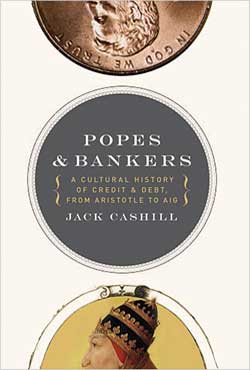Human Rights through the Looking Glass
Jack Cashill - AmericanThinker.com
September 3, 2010
he UPR stands for Universal Periodic Review, a human rights reporting process established by The UN General Assembly in 2006. As shall be seen, “Orwellian” does not do the UPR justice. “Bizarro World” comes closer to the mark.
As the UPR is designed, the UN’s 192 Member States assess their respective human rights performance over the preceding four years and submit a report on the same to the HRC, the UN Human Rights Council.
During this past year, under the guidance of our HRC, Hillary Rodham Clinton, “senior representatives” from “more than a dozen” federal entities wandered the country listening to the self-serving laments of various liberal pressure groups. At the end of the process, they compiled these gripes into a 29-page report and sent it to the UN HRC for review.
Among the reviewing states of the HRC are human rights luminaries like Cuba, Russia, Red China, Saudi Arabia, and-- when not busy sending “emergency transaction” emails--Nigeria.
Our State Department calls the UPR process “a unique avenue for the global community to discuss human rights around the world.” Any sane person would call it a self-deluding boondoggle, and, if its recommendations are followed, a self-destructive one as well.
I could write a book on the various absurdities of the report we submitted—e. g. a soulful plea for the rights of the transgendered and not a word on those of the unborn—but let me focus on one that has the potential to wreak havoc anew on the world’s economy, the call for “fairness and equality in housing.”
“The recession in the United States,” the report insists, “was fueled largely by a housing crisis, which coincided with some discriminatory lending practices.” Those practices, the report strongly implies, resulted in a market where “fewer than half of African-American and Hispanic families own homes while three quarters of white families do.”
“To prevent similar crises in the future,” the report continues in its smugly accusatory way, “the federal government has focused resources and efforts to determine whether and where discrimination took place, as well as to ensure greater oversight going forward.” As proof of the administration’s eagerness to solve the problem, the report cites its “major financial reform legislation.”
I wish I were making this up, but our official 2010 UPR submission to the United Nation argues that discrimination against minorities in the housing market somehow caused the economic crisis and that the misbegotten Dodd-Frank act will somehow repair it. It is no wonder that the authors of this report oppose capital punishment. Upon reading it, Sister Helen Prejean would want them taken out and shot.
While the Obama apparatchiks were busy compiling this report, I was busy writing a book--“Popes and Bankers”--on the real causes of the economic crisis. What they see as the solution I see as the cause, and I can prove my point.
To make the accusation of discrimination work, the report writers had to ignore the most telling set of data, namely default rates. In 2004, the Department of Housing and Urban Development did a comprehensive study of FHA loans that originated in 1992. The sample size was substantial, nearly 250,000 loans.
“As to why black homeownership rates are lower, only the willfully blind can fail to see the problem: namely, the government-induced collapse of the two-parent black family.”
Given that the FHA insures only modest loans for low and moderate-income people, the cross-racial comparisons were for comparable properties. What the study revealed, among other results, was that after the seven prosperous years from 1992 to 1999, blacks were defaulting on their loans more than twice as frequently as whites, and Hispanics were defaulting three times more frequently.
Here is the crucial point: if minorities had been held to a higher standard than whites, their default rates should have been lower than whites, not higher. These numbers suggest the opposite and the obvious: blacks and Hispanics were held to lower standards and have been for at least the last forty years.
As to why black homeownership rates are lower, only the willfully blind can fail to see the problem: namely, the government-induced collapse of the two-parent black family. In 1993, the average income for households headed by divorced women was 40 percent that of married couples; for unmarried women it was only 20 percent. As the numbers suggest, many of these women could not manage homes of their own. Homeownership rates for female-headed households have struggled to stay above 50 percent. For married couples, by contrast, the rates have hovered consistently in the 80-percentile range.
With blacks overrepresented among single parent families--by 1993, 57 percent of black children were growing up in a single-parent household as compared 21 percent of white children-- white homeownership rates inevitably outstripped those for black homeownership. By the early 1990s that gap was at least 25 percentage points, around 70 percent for whites and in the low 40s for blacks.
The writers of the UPR report, however, refuse to acknowledge family breakdown as a problem, let alone as an explanation for the disparity in homeownership rates. Their preferred explanation for every unequal outcome in every endeavor is the inevitable “discrimination.”
Worse, the report writers, indeed the Obama White House, seem unaware that the forced march of unqualified buyers into the homeownership field was the single most explosive variable in the subprime blow-up.
They seem unaware that the Clinton administration demanded that banks quantify—under duress--the progress they were making in giving loans to “LMIs,” people of low and moderate income.
They seem unaware that the government encouraged banks to use “innovative or flexible” lending practices—aka “predatory loans”--to reach their LMI numbers.
They seem unaware that HUD, which Congress had made the regulator of Fannie Mae and Freddie Mac in 1992, began to pressure these agencies to set numerical goals for “affordable housing” even if that meant buying subprime mortgages.
In 2004, under extreme government pressure, homeownership rate reached a new peak. “’Stop! We’re at 69 percent homeownership. We should go no further. These are people who should remain renters,’” former HUD secretary Henry Cisneros wished someone would have said at the time.
Cisneros added that it was “impossible to know in the beginning that the federal push to increase homeownership would end so badly.”
In 2010, everyone knows how badly the push ended, everyone that is save for the clowns who wrote the UPR report and the jokers who approved it.


